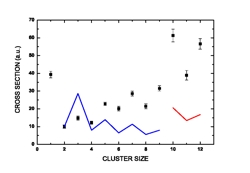
Figure 1: Electron impact detachment of carbon cluster. The points
are the measured data while the lines were calculated from Eq. (1).
Size-dependent electron-impact detachment of internally cold negative clusters
M. Eritt1,2, A. Diner1, Y. Toker,1, O. Aviv,1, D. Strasser1, O. Heber1, I. Ben-Itzhak1,3, A. Wolf4, D. Schwalm4, M. L. Rappaport1, D. Zajfman1,4
1) Department of Particle Physics, Weizmann Institute of Science, Rehovot, 76100, Israel
2) Inst. f. Physik, University of Greifswald, D-17487 Germany
3) J R. Macdonald Laboratory, Kansas State University, Manhattan, Kansas 66506 USA
4) Max-Planck-Institut für Kernphysik, D-69117 Heidelberg, Germany
Electron-impact detachment is a process that has been extensively studied for atoms and small molecules. It has been shown that for such simple species, the electron binding energy Eb is the most important parameter in the determination of both the threshold behavior and the magnitude of the cross section above threshold. A simple scaling law has been obtained [1].
(1) σ~[1/Eb]2
It was shown in previous publication that the scaling law does not hold even for small carbon clusters [2].
Here we report about a systematic study of the cross sections for electron detachment of internally cold Cn-, Aln-, and Agn-. The clusters were produced in a Cs sputter source and injected into an electrostatic ion trap fitted with an internal electron target. The injected clusters were relaxed to their ground electronic and vibrational state in few hundreds of milliseconds and were then crossed by an electron beam with relative collision energy between 5-50 eV [3].
Figure 1 shows the electron-impact detachment cross sections for the Cn- (n=1-12) clusters at electron impact energy of 20 eV, normalized to the known cross section of C2- from Ref. 1. It is clearly seen that the cross section exhibits an even-odd oscillations reflecting the binding energy trend, namely, higher cross sections for weaker binding energies. It also indicates a change between linear chains (n=2-9) and rings (n=10-12). Surprisingly, however, these cross sections increase on the average with cluster size, n, in spite of the increase in electron binding as expected from Equation 1 and shown by the solid line in Figure 1. In contrast, Aln- (n=2-5) clusters follow the known scaling laws for electron detachment. We suggest that the size-dependent polarizability of these clusters is responsible for the observed behavior [2]. Additional data of metallic clusters of Ag- will also be presented.

References:
[1] L.Vejby-Christensen et al., Phys. Rev. A 53, 2371 (1996).
[2] A. Diner et al., Phys. Rev. Lett. 93, 063402/1-4 (2004).
[3] O. Heber et al., Rev. Scientific Instr. 76, 013104 (2005).
This work was supported by the
Chemical Sciences, Geosciences and Biosciences Division,
Office of Basic Energy Sciences,
Office of Science,
U.S. Department of Energy.
Submitted to ICPEAC, July 2005 in Rosario, Argentina.
This abstract is also available in Adobe Acrobat format.
| Return to do another abstract search of all our holdings. |
|
|